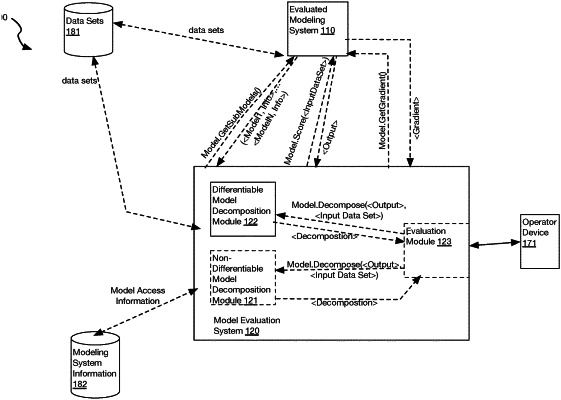| CPC G06N 20/20 (2019.01) [B60Q 9/00 (2013.01); G06N 5/01 (2023.01)] | 21 Claims |

|
1. A method comprising:
receiving an observation input data set of an ensemble model and a corresponding ensemble model output, continuous model output, and tree model output, the observation input data set being associated with a rejection;
generating a first decomposition for the continuous model output relative to a baseline population by using a gradient interface of the continuous model and a second decomposition for the tree model output relative to the baseline population by using tree structure information for the tree model;
generating a third decomposition for the ensemble model output relative to the baseline population by combining the first and second decompositions in accordance with an ensemble process identified by ensemble information for the ensemble model, wherein the first and second decompositions are generated using one or more baseline input data sets representative of the baseline population;
selecting rejection explanation information for the observation input data set based on the third decomposition; and
providing the selected rejection explanation information to an operator device.
|